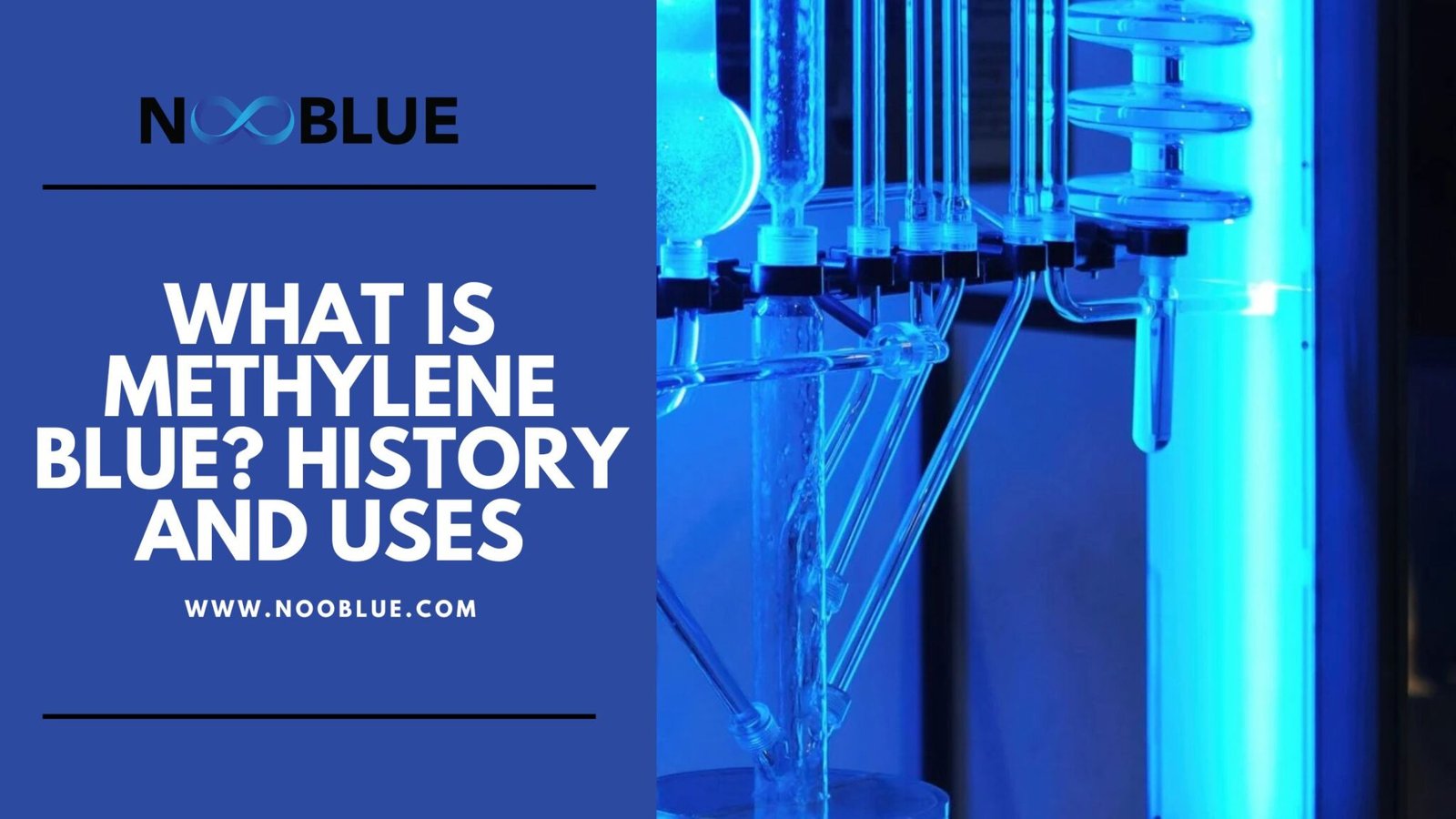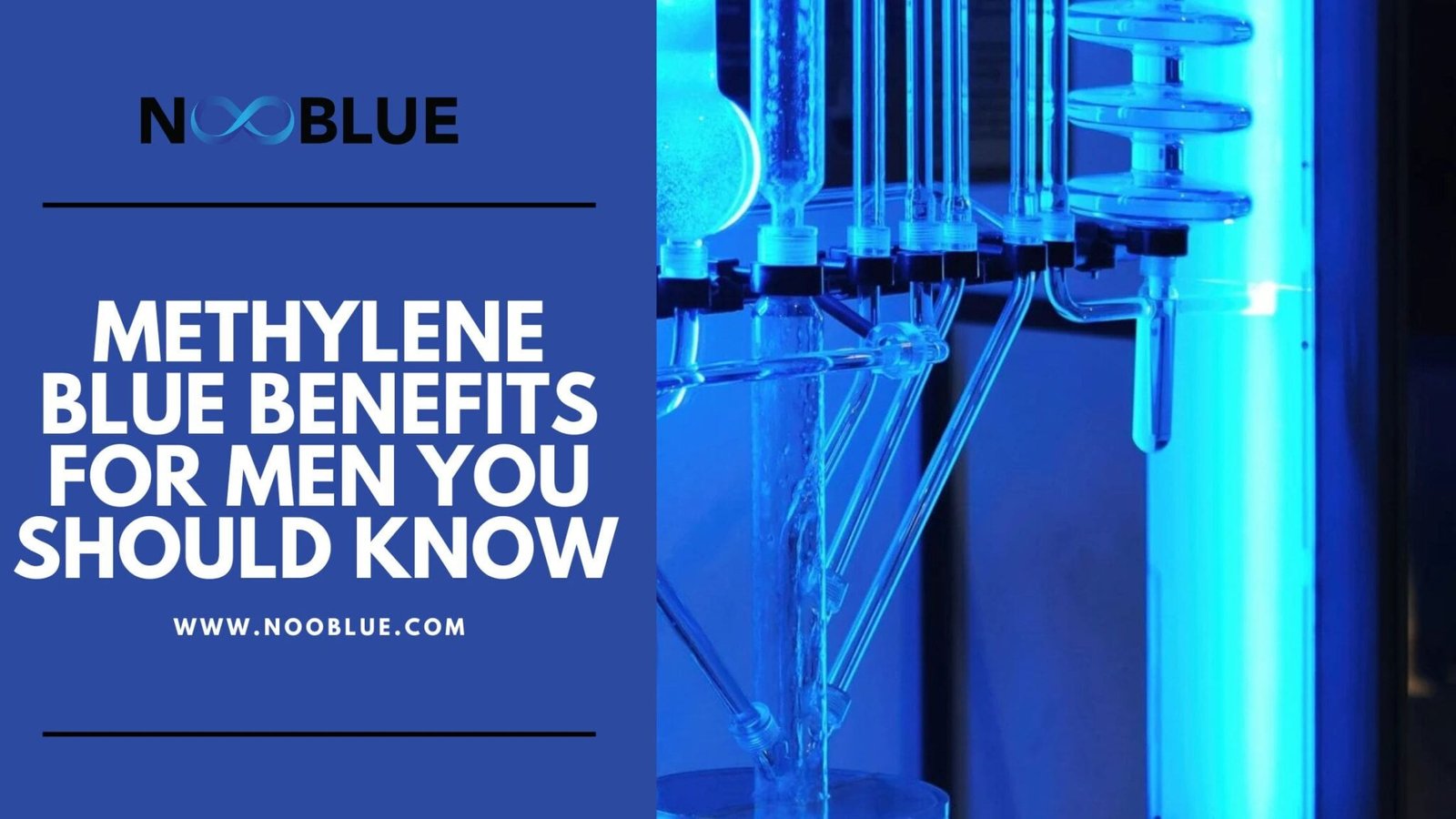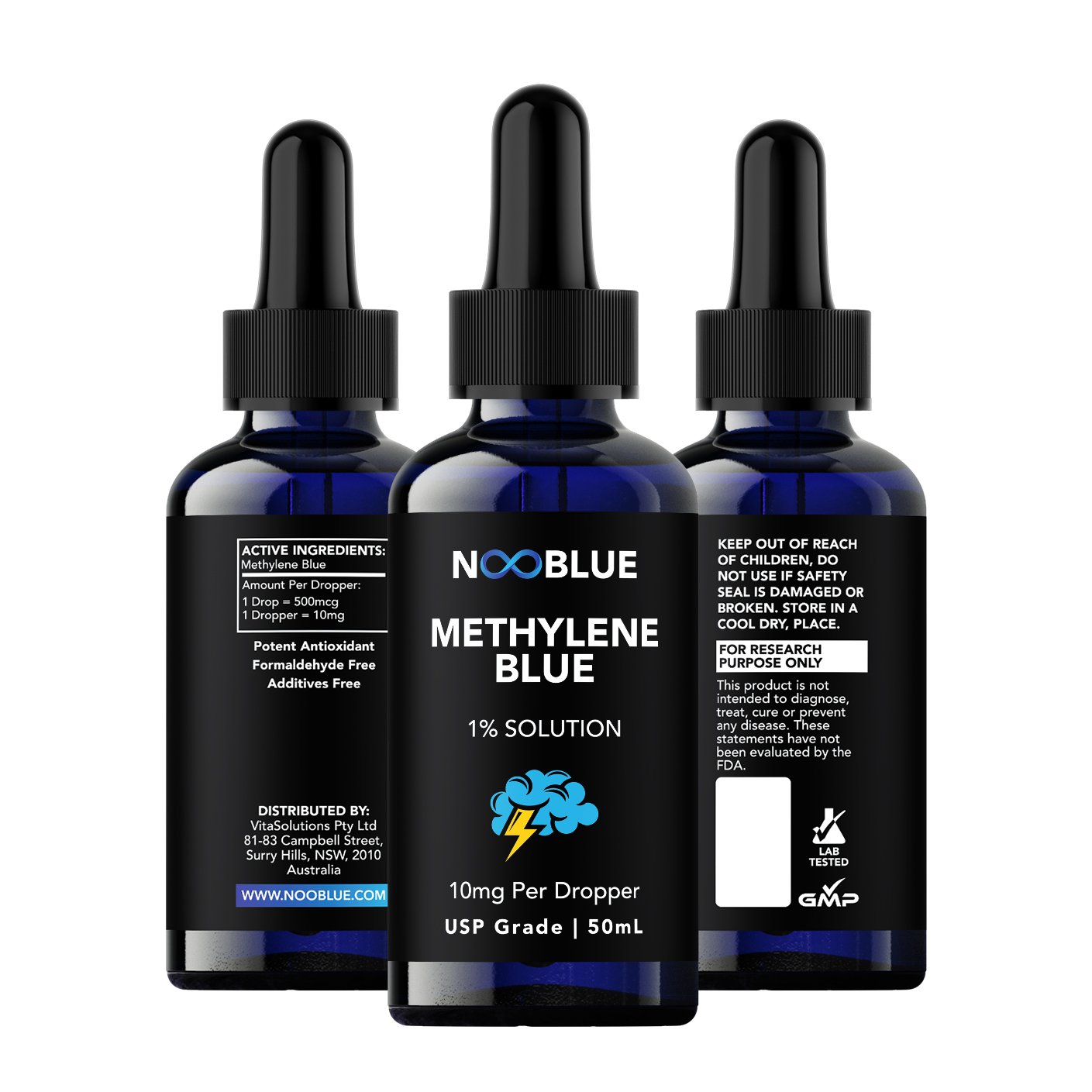Top 7 Benefits of Methylene Blue for Brain and Cellular Health
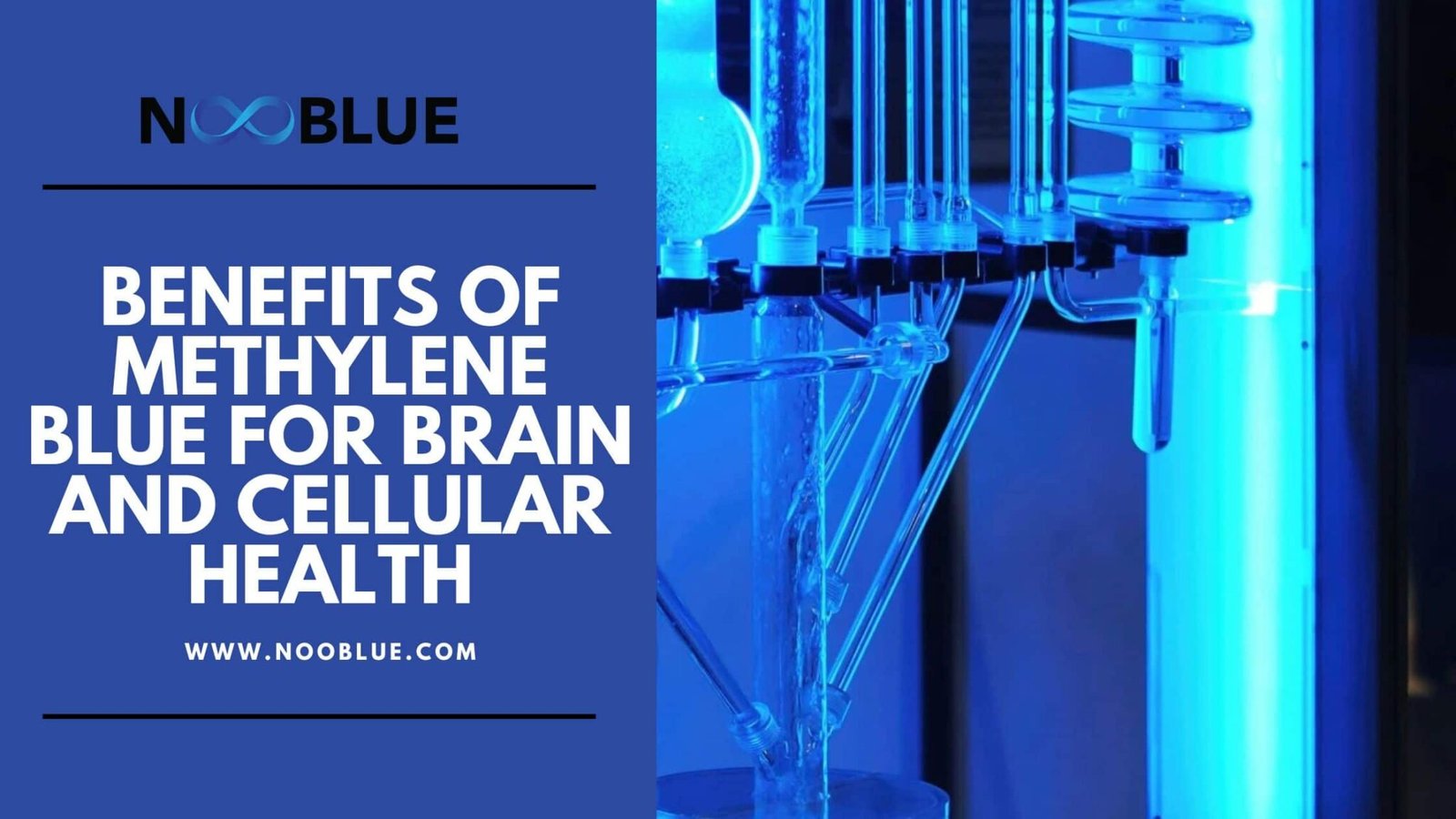
Methylene Blue (MB) is a compound with a long history in medicine. First developed in the late 1800s as a dye and treatment for malaria, it has since been studied for its unique ability to influence how cells produce and use energy.
In recent years, neuroscientists and medical researchers have turned their attention to Methylene Blue’s effects on the brain, memory, and overall cellular health.
Below are seven benefits of Methylene Blue backed by scientific studies, with a closer look at what experts have discovered so far.
Top 7 Benefits of Methylene Blue for Brain and Cellular Health
| Benefit | Key Research / Researchers | Evidence Strength | Notes |
| Mitochondrial support | Gonzalez-Lima et al. (UT Austin) | Strong (animal, human fMRI) | Improves ATP production |
| Neuroprotection | Poteet et al., PLoS ONE (2012) | Strong (animal) | Reduces oxidative stress |
| Brain metabolism boost | Gonzalez-Lima fMRI/PET studies | Strong (animal imaging) | Improves oxygen & glucose use |
| Memory & cognition | UT Health Science Centre human trial (2016) | Moderate (small trial) | Enhanced short-term memory |
| Alzheimer’s & Parkinson’s | LMTX Alzheimer’s trials; animal PD models | Early–Moderate | Mixed results, ongoing studies |
| Mood & neurotransmission | Progress in Neurobiology review | Limited | Affects serotonin & dopamine |
| Anti-aging potential | Cellular/animal studies | Early (preclinical) | Protects DNA, supports repair |
1. Enhances Mitochondrial Energy Production
Dr. Francisco Gonzalez-Lima and colleagues at the University of Texas have conducted multiple studies showing that Methylene Blue improves mitochondrial respiration. By acting as an alternative electron carrier in the electron transport chain, it helps cells generate ATP more efficiently.
This makes it especially valuable in brain cells, which demand high levels of energy for memory and focus.
2. Provides Strong Neuroprotection
In 2012, a study published in PLoS ONE by Poteet et al. demonstrated that Methylene Blue reduced oxidative stress and protected neurons in models of stroke and Parkinson’s disease.
Its antioxidant effect comes from lowering the production of reactive oxygen species while keeping mitochondria working effectively. This dual action makes it a promising neuroprotective agent.
3. Improves Brain Metabolism and Oxygen Use
Animal studies using advanced brain imaging techniques, including PET and fMRI scans, have shown that Methylene Blue increases cerebral blood flow and oxygen consumption.
Research teams led by Gonzalez-Lima observed that treated animals had higher rates of glucose uptake and oxygen use in critical brain regions, suggesting better mental performance under both normal and low-oxygen conditions.
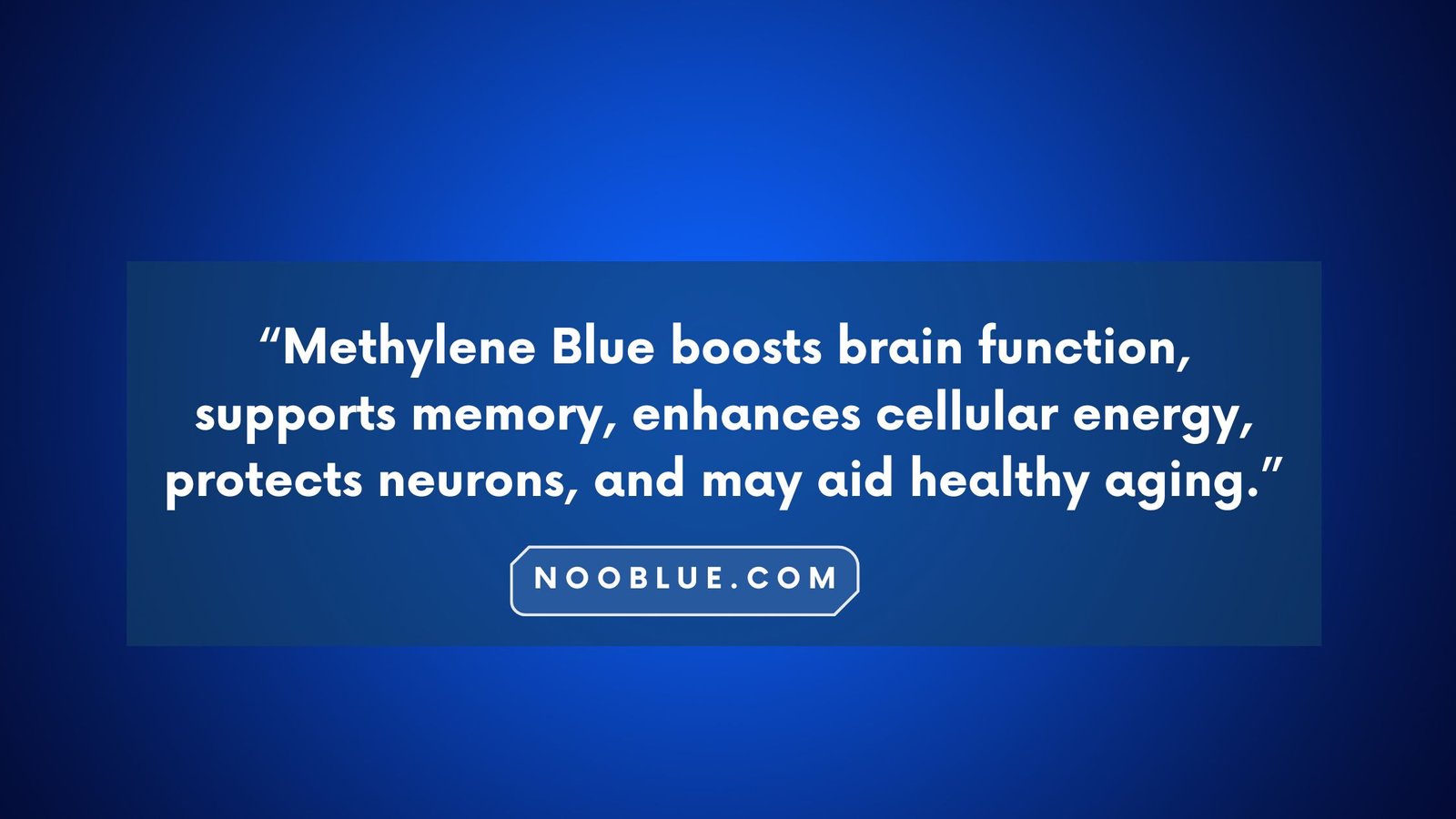
4. Supports Memory and Learning
One of the most interesting findings comes from a small human trial conducted at the University of Texas Health Science Center. Participants who received a low oral dose of Methylene Blue performed about 7% better on short-term memory tests.
Functional MRI scans also revealed increased activity in brain areas tied to memory consolidation and attention. This aligns with earlier animal studies showing that Methylene Blue strengthens long-term memory formation.
5. Investigated for Alzheimer’s and Parkinson’s Disease
Because of its ability to enhance mitochondrial function and reduce oxidative damage, Methylene Blue has been studied as a potential treatment for neurodegenerative diseases. A clinical formulation called LMTX (a derivative of Methylene Blue) has been tested in Alzheimer’s patients.
While results have been mixed, researchers remain interested in its potential to slow disease progression. In Parkinson’s models, Methylene Blue has shown protective effects on dopamine-producing neurons.
6. Modulates Brain Chemicals and Mood
Methylene Blue also interacts with neurotransmitters. According to a review in Progress in Neurobiology, it inhibits the enzyme monoamine oxidase (MAO), which influences serotonin and dopamine levels.
This has led scientists to explore its potential benefits in mood disorders such as bipolar depression. While findings are still early, its dual action on brain energy and neurotransmission makes it a compound of interest in mental health research.
7. Anti-Aging and Cellular Repair Potential
Since mitochondrial decline and oxidative stress are closely linked to aging, scientists are exploring Methylene Blue as a potential anti-aging tool. Laboratory studies have shown that it protects DNA from oxidative damage and supports cellular repair mechanisms.
Although these findings are still limited to preclinical research, they point to possible longevity benefits in the future.
Conclusion
Methylene Blue is not a new substance, but modern science is uncovering new ways it may benefit the brain and body. From supporting mitochondrial health and boosting memory to potential applications in neurodegenerative disease, the evidence so far is encouraging.
Still, it’s important to remember that much of the strongest evidence comes from animal and preclinical research, with only a few small-scale human studies. For now, Methylene Blue is FDA-approved for specific medical conditions, but its use as a nootropic or anti-aging supplement should only be considered under medical supervision.
Methylene Blue is a compound where science and medicine meet curiosity and potential. As research continues, it may become an important tool for supporting brain and cellular health.
Sources:
- Rojas, J. C., Bruchey, A. K., & Gonzalez-Lima, F. (2012).
Neurometabolic mechanisms for memory enhancement and neuroprotection of methylene blue.
Progress in Neurobiology, 96(1), 32–45. - Poteet, E., et al. (2012).
Neuroprotective actions of methylene blue and its derivatives.
PLoS ONE, 7(10), e48279. - Auchter A, Williams J, Barksdale B, Monfils MH, Gonzalez-Lima F
Therapeutic benefits of methylene blue on cognitive impairment during chronic cerebral hypoperfusion.
2014:42 Suppl 4:S525-35.

